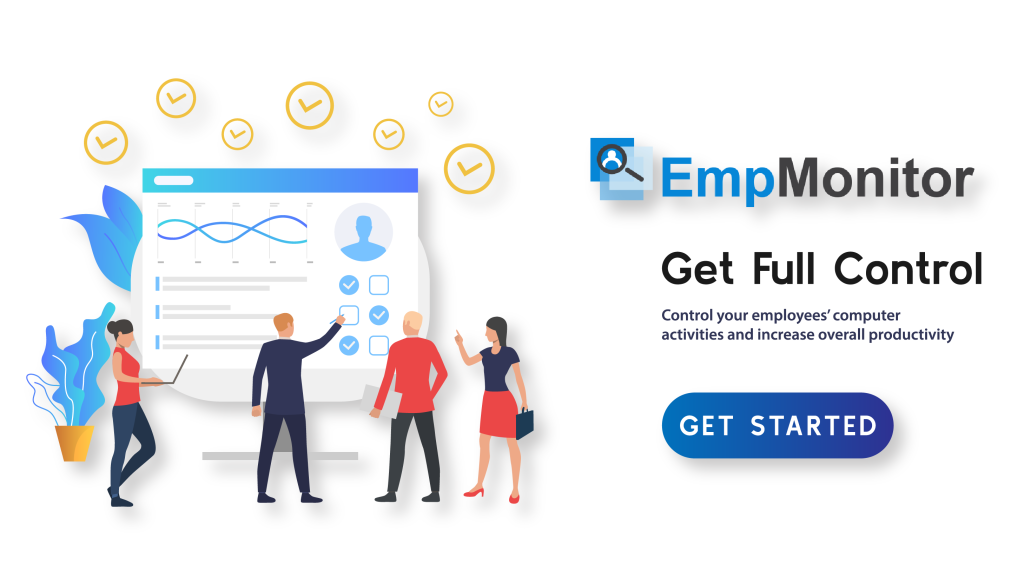With so many remote workers in your organization, how will you make sure that they’re productive or not? And how can you make remote work more efficient for your business?
According to a report, 77 percent of remote workers consider an off-site working system more productive. However, building successful remote work can be difficult. If you aren’t prepared to overcome the challenges, you might face a lack of enthusiasm in your team that may reflect in your team’s productivity.
A progressive remote team does require a specific approach in which everyone should be responsible for their work and actively do their job on time.So, if you are wondering how to manage remote work productivity, this blog is for you.
Let’s start by understanding some benefits and challenges of remote work faced by employees and employers.
Listen To The Podcast on Remote Workers To manage better:
Benefits of remote work for employees & employers:
Here are some benefits of remote work that would help you to upgrade your business.
# Offering remote work will increase productivity:
The two major elements that determine whether employees are putting their best into their work or not are- Productivity and Effectiveness. Where productivity talks about the amount of work completed and effectiveness talks about the amount of effort put into that work.
It has been seen that with remote work options, employees seem to be more enthusiastic. And it shows up in the form of their work engagement and productivity. Remote workers’ productivity is vital for any company- after all, productive employees make a company successful.
However in a recent study conducted on a group of several companies, US Bureau Labor Report, productivity has shrunk in recent years. If you are a company employer, you might be thinking about how to identify employees’ productive time. How many hours do they actually work?
Well, we have the solution for you – Employee monitoring software is a web service that allows companies to monitor or supervise all their employee computers automatically from a central location.
Empmonitor is an all-in-one monitoring software that provides accurate data about your employee’s performance. You can track your remote workers’ productive time to evaluate top-performing staff.
Empmonitor consists of various functions like productivity tracking, time tracking, Keystroke Logging, regular screenshots, report generation, etc.
# Great opportunity access:
Remote work provides access to more opportunities for both employees and employers. If you are living in a small city or town, you are no longer required to relocate to access a well-paid job. And if you are an employer who wants an effective workforce, remote work will allow you to access the immense talent pool present globally, no matter where the best remote employees are present.
# Boost inclusiveness:
Remote work enables organizations to explore diversity by hiring remote workers from different geographical locations and cultural backgrounds. It gives more options to employers, looking for candidates not only in places closer to their work zone but also from farther places. It gives them more choices to fill their talent pool, which is difficult when recruiting is restricted to a specific area.
# Saves equipment cost:
Equipment for a workplace might be expensive to provide. After all, you need to spend money on a variety of things such as a printer, computer, paper, ergonomic chairs, server, electricity, etc. Many of these expenses can be reduced when companies hire remote workers.
Remote work challenges:
If you have never collaborated with a remote team, initially, it would be difficult for you to manage your workforce. So here are some remote workforce challenges that you may face while you can overcome these challenges by enhancing employee engagement and satisfaction in your firm.
# Remote Workers may face an unprofessional office setup:
Everyone can not manage a full home office setup for themselves. But if a minimum requirement is not there, it may cause discomfort for an employee to work effectively. And that may also cause a negative influence on employees’ productivity. And ultimately, it would also affect the team’s performance.
Also, to make your workplace more comfortable, what you can do is utilize ergonomic equipment such as you can prepare a sitting posture, also you can adjust your work screens at a specific angle to avoid discomfort. Additionally, to get a comfortable environment, you can decorate your workplace to make yourself more productive.
# Working From Home Can Be Distractive:
Unlike office setup, employees may face distractive elements at home, which can affect their productivity. A simple method to avoid distraction is to find a spot in your home where you can work peacefully. Also, you need to remove other distraction that affects your work like non-work device, unnecessary noise, etc.
# Lack Of Proper Interaction:
The most common problem of remote workers is collaborating from different locations. When employees are present in the same office, they can share information without any limitation, but the remote team has highly limited. So it is a necessary step to interact with your remote work on regular bases.
Read More:
05 Tips To Create Effective Company Goals That Inspire Employee Engagement
Employee Engagement Is The New Trend You Need To Catch Up In 2023
How to manage remote workers?
There is no one-size-fit-for-all strategy for managing remote workers. Companies may face unique challenges while handling virtual employees. Although, an effective and solid plan to communicate with employees can remove business obstacles. Here are some tips for managing remote employees.
# Define productivity standards for remote work:
It’s important to clear your expectations as an employer while talking about your productivity standards. Some productivity requirements will change depending on the position; others might be uniform throughout the business.
Providing expectation standards has several benefits, such as it keeps employees motivated and focused on completing given targets. Expectations may change depending on the profession. That’s why it is vital to present your expectation to your employees.
For instance, how frequently you expect them to check in, whether you’d like them to do so before their workday ends, and whether they should keep time logs.
# Continuous Interaction With Remote Workers:
Working remotely certainly adds complexity for managers, but managing remote work is not all that different from leading onsite teams. This step will help you to uncover any potential issues or challenges. In addition, you should allow a forum for your team members to raise concerns that will be easier for you to guide them and resolve those issues. Also, you can encourage your team members to speak up and contribute their knowledge on the topic.
# Analyze Employee’s Productivity:
Measuring the productivity of your employees allows you to make necessary decisions regarding your business. An individual employee’s productivity matters a lot in meeting tight deadline schedules. Empmonitor is the best way to analyze productivity. You can easily find out the productive and non-productive hours of your employees.
# Promote Two-Way Communication:
Recent research by Innsbruck University School of Management said that the major element that drives employee satisfaction is trust and loyalty. It means that trust and loyalty directly influence the quality of performance, whereas two-way communication ensures trust and employee engagement within an organization.
Moreover, communication will promote the flow of information and perspective in both directions and supports the development of an organization and its employees.
# Encourage Feedback:
Leading your remote worker and incorporating their feedback is a part of a strong organization. You may use the top to bottom feedback like many companies do in their business, but it is also necessary to encourage upward feedback. This effort highlights the employees’ continuity to scale their activities in the organization.
# Make Your Schedule Accessible:
Creating and following a remote work schedule is vital to remain productive to prevent burnout. Thus, the scheduling function will replace the exterior monitoring agent, to ensure that each remote worker meets the particular expectation. This scheduling process will include some of the additional benefits of remote work like time management, preparedness, work-life balance, etc.
Final Words:
To understand what works better for you, sometimes the answer is obvious, but many times you may need some help from monitoring software like Empmonitor to maximize remote workers‘ productivity. Managing a remote team is essential to keep communicating with your employees to build trust, offer support, and clarify expectations.














